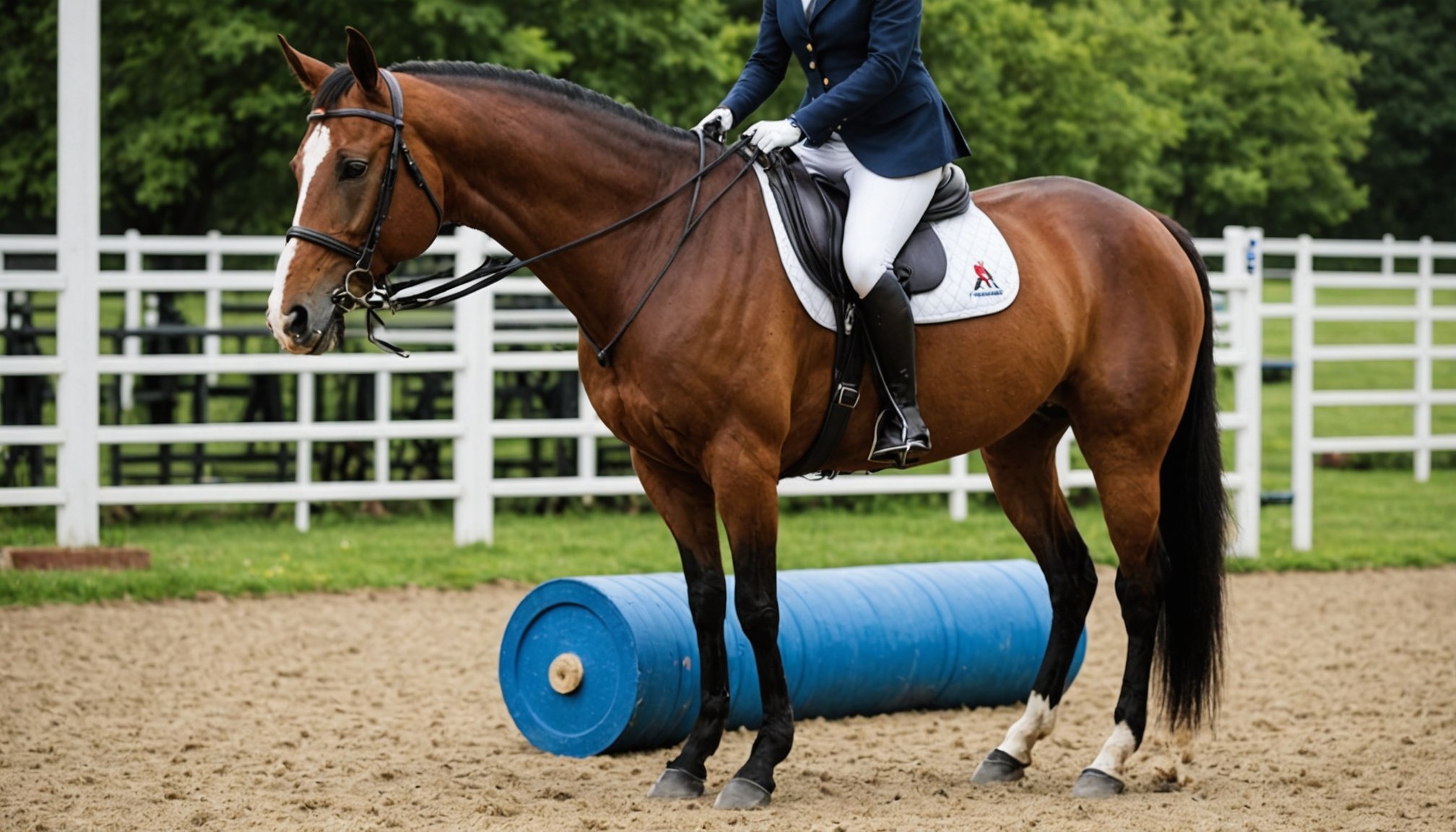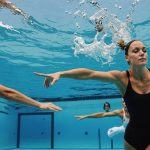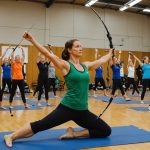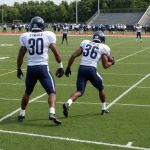Top Core Strengthening Exercises Every Equestrian Should Master for Improved Riding Performance
As an equestrian, you understand the importance of having a strong and stable core to enhance your riding performance. A strong core is not just about aesthetics; it is crucial for maintaining balance, stability, and effective communication with your horse. Here’s a comprehensive guide to the top core strengthening exercises that every equestrian should master.
Why Core Strength is Crucial for Equestrians
Core strength is the foundation of any athletic performance, and horse riding is no exception. When you ride, your core muscles play a vital role in maintaining your posture, balance, and control over the horse. Here’s what core strength can do for you:
Additional reading : Crafting the Ultimate Sprint-Focused Conditioning Routine for Field Hockey Success
- Improve Balance and Stability: A strong core helps you maintain your balance and stability in the saddle, which is essential for navigating various terrains and maneuvers.
- Enhance Communication with Your Horse: By having better control over your body, you can communicate more effectively with your horse through subtle movements and weight shifts.
- Reduce Fatigue: Strengthening your core muscles can help distribute the workload more evenly, reducing fatigue and allowing you to ride for longer periods.
- Prevent Injuries: A strong core can help stabilize your body and reduce the risk of injuries, particularly in the lower back and neck.
Essential Core Strengthening Exercises for Equestrians
Here are some of the most effective core strengthening exercises tailored for equestrians:
1. Plank with Hip Dips
- Starting Position: Get into a plank position on your forearms, with your hands clasped together and your feet shoulder-width apart.
- Movement: Keeping your shoulders down, tilt your hips to the left and right, touching the ground each time. Ensure your feet follow the movement.
- Duration: Hold for 30 seconds to 1 minute, rest for 30 seconds, and repeat for 3-4 sets[1].
2. Mountain Climbers
- Starting Position: Start in a high plank position with your hands directly under your shoulders and your heels, shoulders, and head aligned.
- Movement: Bring your right knee towards your chin and quickly switch to the left knee, mimicking the motion of running.
- Duration: Continue for 30 seconds to 1 minute, rest for 30 seconds, and repeat for 3-4 sets[1].
3. Hyperextensions of the Lower Back
- Starting Position: Lie on your stomach with your arms and legs extended outward, looking down.
- Movement: Engage your core muscles, then lift your arms and legs off the ground, looking down. Return to the starting position.
- Duration: Repeat for 30 seconds to 1 minute, rest for 30 seconds, and repeat for 3-4 sets[1].
4. Farmers Walk with Kettlebells
- Starting Position: Stand with a heavy kettlebell in each hand, engaging your core and keeping your shoulders back.
- Movement: Walk across the room, keeping your feet slightly outward and your knees unlocked. Turn around and continue walking.
- Duration: Walk for 30 seconds to 1 minute, rest for 30 seconds, and repeat for 3-4 sets[1].
Detailed Exercise List
Here is a detailed list of exercises that target different muscle groups essential for equestrians:
Also read : Unlocking Performance: The Powerful Impact of Strength Training for Runners
-
Hip Thrust (Relevés de Bassin)
-
Strengthens glutes and lower back muscles.
-
Position: Inverted table position with hands under shoulders, hips lifted towards the ceiling.
-
Movement: Slowly lower your buttocks towards the ground and quickly return to the starting position[1].
-
Planche Superman
-
Targets core and upper body muscles.
-
Position: Plank position on forearms with elbows under shoulders.
-
Movement: Extend your left arm forward and lift your right leg. Return to the starting position and repeat with the opposite arm and leg[1].
-
Planche avec Rotation du Buste
-
Strengthens core and upper body muscles.
-
Position: Plank position with forearms parallel to the ground.
-
Movement: Turn your body to the right, lifting your right arm towards the ceiling. Follow with your feet and return to the starting position. Repeat on the left side[1].
Table: Comparison of Core Strengthening Exercises
| Exercise | Muscle Groups Targeted | Duration | Sets | Rest Time |
|---|---|---|---|---|
| Plank with Hip Dips | Core, Obliques | 30 seconds – 1 minute | 3-4 | 30 seconds |
| Mountain Climbers | Core, Upper Body | 30 seconds – 1 minute | 3-4 | 30 seconds |
| Hyperextensions of Lower Back | Lower Back, Core | 30 seconds – 1 minute | 3-4 | 30 seconds |
| Farmers Walk with Kettlebells | Core, Upper Body, Legs | 30 seconds – 1 minute | 3-4 | 30 seconds |
| Hip Thrust | Glutes, Lower Back | 30 seconds – 1 minute | 3-4 | 30 seconds |
| Planche Superman | Core, Upper Body | 30 seconds – 1 minute | 3-4 | 30 seconds |
| Planche avec Rotation du Buste | Core, Upper Body | 30 seconds – 1 minute | 3-4 | 30 seconds |
Practical Tips and Anecdotes
Maintaining Proper Posture
Proper posture is crucial for effective riding and core strength. Here’s a tip from an experienced equestrian:
“When riding, keep your shoulders back, engage your core, and maintain a slight arch in your lower back. This helps in distributing your weight evenly and communicating clearly with your horse.”
Incorporating Core Training into Your Routine
To see significant improvements, it’s essential to incorporate core training into your regular fitness routine. Here’s how you can do it:
“Start by dedicating 2-3 days a week to core training. Begin with shorter sessions and gradually increase the duration and intensity as you build strength and endurance. Remember to warm up before each session and cool down afterwards to prevent injuries.”
Real-Life Example: Core Strength in Dressage
Dressage requires precise control and balance, making core strength paramount. Here’s an example from a dressage rider:
“In dressage, every movement is about precision and control. By strengthening my core, I can maintain the perfect posture and balance, which allows me to communicate subtle cues to my horse. This has significantly improved our performance in competitions.”
Additional Tips for Horse Riders
Lower Back Care
Lower back pain is common among equestrians due to the nature of the sport. Here are some tips to help you care for your lower back:
- Stretch Regularly: Regular stretching can help reduce muscle tension and improve flexibility.
- Strengthen Core Muscles: Exercises like hyperextensions and planks can help stabilize your lower back.
- Maintain Good Posture: Always maintain good posture while riding and in daily activities to reduce strain on your lower back.
Upper Body Strength
Upper body strength is also crucial for maintaining balance and control while riding. Here are some exercises to help you build upper body strength:
- Push-Ups: Targets chest, shoulders, and triceps.
- Rows: Targets back and biceps.
- Shoulder Press: Targets shoulders and triceps.
Building core strength is a critical component of any equestrian training program. By incorporating the exercises outlined above into your routine, you can improve your balance, stability, and overall riding performance. Remember to start slowly, increase intensity gradually, and always maintain proper posture and form.
As an equestrian, your body is your tool, and a strong core is the foundation upon which all other skills are built. With consistent training and the right exercises, you can achieve the core strength necessary to excel in horse riding and enjoy a more fulfilling and injury-free riding experience.
In the words of a seasoned equestrian, “A strong core is not just about physical strength; it’s about the confidence and control it gives you in the saddle. It’s the difference between a good ride and a great one.” So, saddle up and start strengthening your core today











